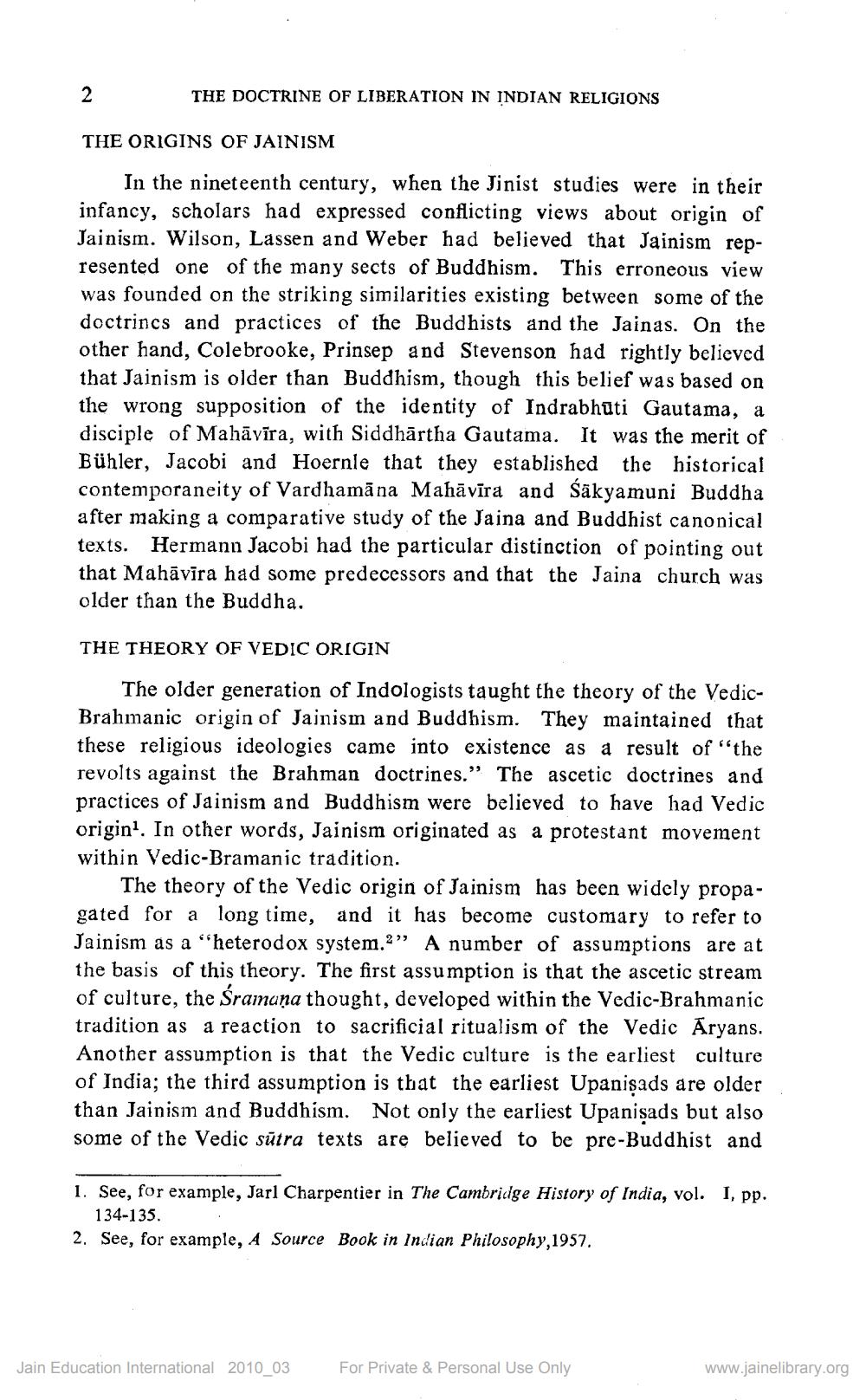________________
2
THE DOCTRINE OF LIBERATION IN INDIAN RELIGIONS
THE ORIGINS OF JAINISM
In the nineteenth century, when the Jinist studies were in their infancy, scholars had expressed conflicting views about origin of Jainism. Wilson, Lassen and Weber had believed that Jainism represented one of the many sects of Buddhism. This erroneous view was founded on the striking similarities existing between some of the doctrines and practices of the Buddhists and the Jainas. On the other hand, Colebrooke, Prinsep and Stevenson had rightly believed that Jainism is older than Buddhism, though this belief was based on the wrong supposition of the identity of Indrabhuti Gautama, a disciple of Mahāvīra, with Siddhartha Gautama. It was the merit of Bühler, Jacobi and Hoernle that they established the historical contemporaneity of Vardhamana Mahāvīra and Sakyamuni Buddha after making a comparative study of the Jaina and Buddhist canonical texts. Hermann Jacobi had the particular distinction of pointing out that Mahāvīra had some predecessors and that the Jaina church was older than the Buddha.
THE THEORY OF VEDIC ORIGIN
The older generation of Indologists taught the theory of the VedicBrahmanic origin of Jainism and Buddhism. They maintained that these religious ideologies came into existence as a result of "the revolts against the Brahman doctrines." The ascetic doctrines and practices of Jainism and Buddhism were believed to have had Vedic origin'. In other words, Jainism originated as a protestant movement within Vedic-Bramanic tradition.
The theory of the Vedic origin of Jainism has been widely propagated for a long time, and it has become customary to refer to Jainism as a "heterodox system.2" A number of assumptions are at the basis of this theory. The first assumption is that the ascetic stream of culture, the Śramana thought, developed within the Vedic-Brahmanic tradition as a reaction to sacrificial ritualism of the Vedic Aryans. Another assumption is that the Vedic culture is the earliest culture of India; the third assumption is that the earliest Upanisads are older than Jainism and Buddhism. Not only the earliest Upanisads but also some of the Vedic sutra texts are believed to be pre-Buddhist and
1. See, for example, Jarl Charpentier in The Cambridge History of India, vol. I, pp. 134-135.
2. See, for example, A Source Book in Indian Philosophy, 1957.
Jain Education International 2010_03
For Private & Personal Use Only
www.jainelibrary.org




